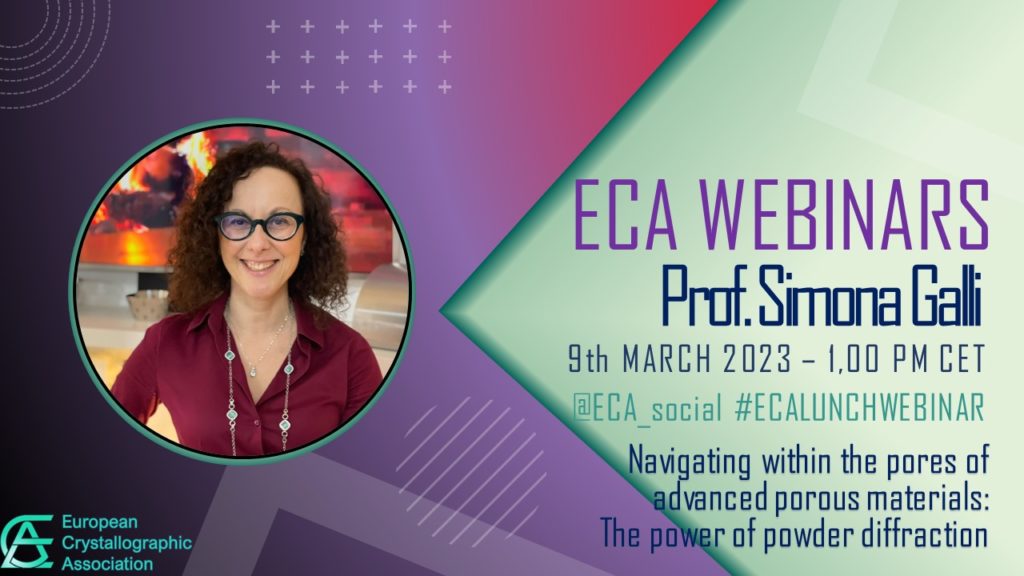L'Association Européenne de Cristallographie (ECA) organise depuis 2021 des "webinaires déjeuner". Les groupes d'intérêt spéciaux (SIG) et les groupes d'intérêt général (GIG) de l'ECA organisent à tour de rôle un webinaire adapté à la communauté des cristallographes au sens large. Le dix-neuvième webinaire sera diffusé le 9 mars 2023 et le thème est Navigating within the pores of advanced porous materials : the power of powder diffraction par Simona Galli (Università degli Studi dell’Insubria, Como, Italie). Inscriptions ici.
The functional properties that a crystalline solid possesses depend not only on its chemical nature, but also on its crystal and molecular structure. By means of recent cases of study selected within the realm of metal-organic frameworks and covalent organic frameworks, the talk will demonstrate that (in situ) powder diffraction, exploited in the lab or at large scale facilities, is a powerful tool to unveil key structure-property relationships, thus enabling to rationalize the bulk properties under investigation with a molecular-level insight.






